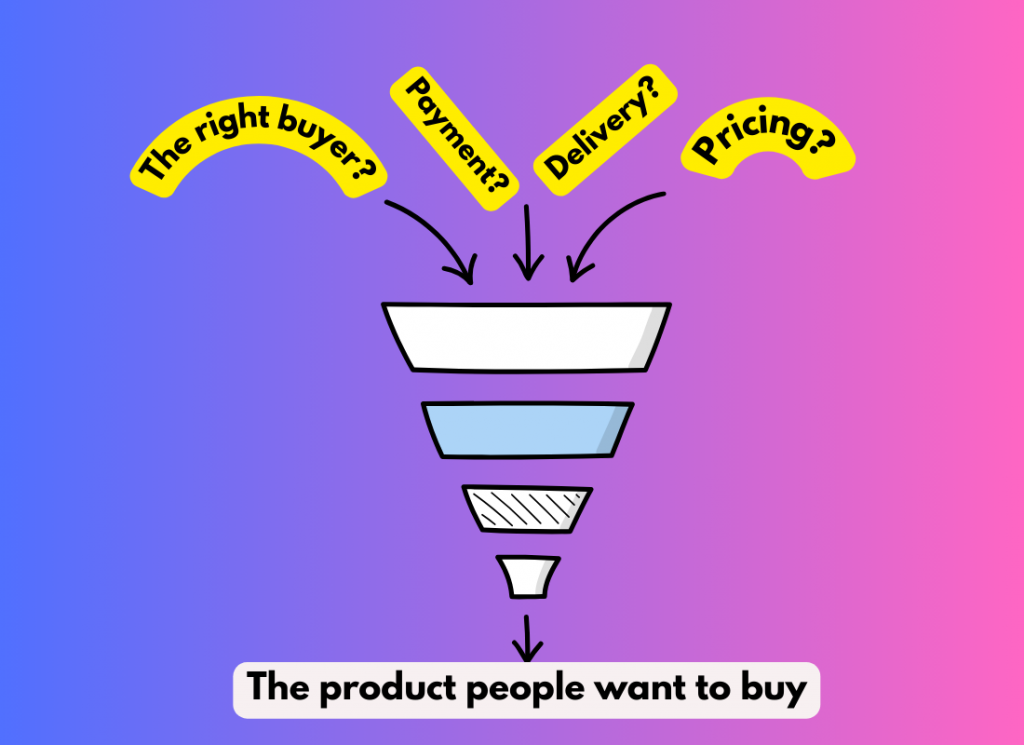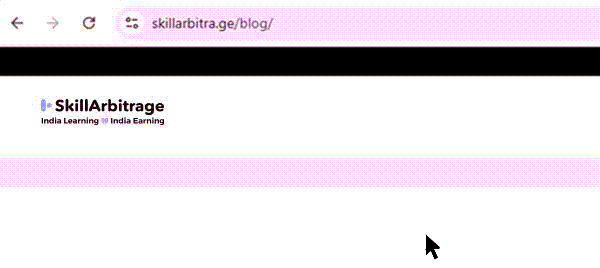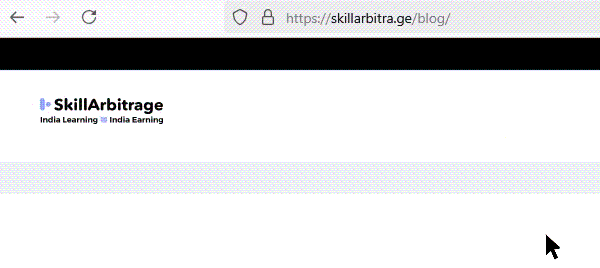This article is for Indian freelancers who want to master funnels and real business skills. It walks you through the simplest zero-budget funnel that 1) costs nothing, 2) is beginner-friendly, and 3) gets you to your first $1. By the end, you’ll have a live funnel, the confidence to launch your own digital product, and the hands-on expertise to sell like a true marketing consultant.
Table of Contents
Previously on The Power of Labeling…
Raghunandan had learned how to get in front of the right clients. Using the Dream 100 strategy, he stopped chasing and started attracting high-value prospects. But getting their attention was just the first step.
When decision-makers finally listened, he faced a new problem: How do you make them see your value instantly?
That’s where labeling came in.
By turning complex ideas into clear, sticky labels, he made his pitches effortless to understand and impossible to forget. Suddenly, prospects weren’t just interested. They were ready to buy.
But last week, a client hit him with a brutal truth:
“I don’t work with marketers who don’t understand business.”
Not because Raghunandan lacked skill, but because he had never sold a product himself. He could sell services, sure. But real business? Scaling? Margins? He had no skin in the game.
That changes now.
To prove he knows business, he’s going to build something real. No ads. No website. No budget. Just a simple, airtight funnel that takes a product from idea to income.
(Continued…)
At 4 PM, Raghunandan shut his door. Another pitch. Another client.
At 4:30, the door creaked open.
He walked out like a man who’d just been punched in the stomach. His shoulders slumped. His eyes had the distant look of someone whose entire worldview had just shifted. He sank onto the couch, staring at nothing.
Parvathishankar folded his newspaper. Interesting.
“Everything alright?”
“I lost the pitch,” Raghunandan muttered.
Parvathishankar shrugged. “Part of the game, boy.”
“This one was different.” Raghunandan ran a hand through his hair. “Made me wonder if I’m in the right business at all.”
Parvathishankar sat up. “Oh? And why’s that?”
“The prospect told me I don’t know business.”
“Oh? And what did you say to that?” Parvathishankar probed.
“I told him I run a marketing strategy business.”
“And?”
“He said that’s just a service. That I don’t know what it’s like to sell a product. Scale. Manage margins. Handle supply chains. He doesn’t doubt my skills. But he only works with marketers who understand business.”
Raghunandan clenched his jaw. “And I had no answer to that.”
Parvathishankar tapped the armrest. “Then maybe it’s time you got one.”
Just then, the front door creaked open.
Swathi walked in, dropping her purse on the table. “What’s with the long face?”
Parvathishankar smirked. “Your boyfriend just had an epiphany.”
Swathi glanced between them. “Oh no. What happened now?”
“He lost a pitch,” Parvathishankar said.
Swathi shrugged. “So? That happens.”
“This time, it wasn’t about my copy. Or my strategy,” Raghunandan exhaled. “The client said I don’t know business.”
Swathi paused mid-step. “Oof.”
Raghunandan threw up his hands. “You too?”
Service business vs. Product business
Swathi sat across from him. “Look, I hate to say it, but he’s not wrong. You advise businesses. But have you ever run one?”
Raghunandan groaned. “Why is everyone acting like marketing isn’t part of business?”
Swathi leaned in. “Marketing is a function. Business is the whole game. You don’t have skin in it.”
Parvathishankar took off his glasses. “If you had to sell something tomorrow – your product, not someone else’s – what would it be?”
Raghunandan hesitated. He had no idea.
“I mean… a copywriting course?”
Parvathishankar nodded. “Why would someone buy it?”
“Because I know what I’m talking about?”
Swathi smirked. “So do thousands of others. What makes yours worth paying for?”
“Okay… maybe an e-book?”
Swathi shrugged. “And why wouldn’t it just become another forgotten PDF?”
Parvathishankar piped up. “A product, digital or physical, has to solve a problem so clearly that people want to buy it.”
Swathi nodded. “If you want to prove you know business, don’t just sell something. Sell something that sells.”
Raghunandan looked down. The CEO’s words echoed in his head. I only work with marketers who understand business.
Parvathishankar watched him carefully. “Raghunandan Parvathishankar Dayanidhi Venkatanarasimhan Subramaniam Nair, this is your moment of truth. Are you going to sit here feeling sorry for yourself, or are you going to prove him wrong?”
Raghunandan exhaled. Slowly, he nodded. “Okay.”
Parvathishankar raised an eyebrow. “Okay?”
Raghunandan sat up. “Let’s do it. I’m going to sell something. Build a real funnel. A real product. And I’m going to make it work.”
Why funnels matter
Raghunandan drummed his fingers on the table. “Okay. Let’s say I sell something. What if no one buys?”
Swathi grinned. “That’s the beauty of a funnel. You don’t build it once and pray. You tweak it until it works.”
Parvathishankar nodded. “A funnel is like a money machine. But no machine runs perfectly at first. You start simple. You see what works. You improve.”
Swathi leaned in. “Right now, you’re thinking like a freelancer – deliver and get paid. Funnels work differently. You refine every part until it converts better.”
Raghunandan frowned. “Refine what?”
Parvathishankar raised a finger. “The offer.”
Swathi raised another. “The hook.”
Parvathishankar added a third. “The pricing.”
Swathi stacked her hand on top. “And once you make money, you reinvest in better design, better copy, even ads to scale.”
Parvathishankar folded his arms. “The key is starting. A simple funnel gives you real data, real feedback, and real sales. Every tweak makes you more money. That’s how businesses grow.”
Raghunandan sat up straight. “So instead of waiting for it to be perfect, I just launch… and then improve?”
Swathi nodded. “Exactly. And the first decision?”
She smirked. “What are you selling?”
Raghunandan stared at them.
He had no idea.
And that terrified him.
Digital vs. physical products
Swathi folded her arms. “Okay, let’s be real. You’re not starting a factory tomorrow. What can you actually sell?”
Raghunandan frowned. “Why not? Tesla started in a garage.”
Parvathishankar raised an eyebrow. “Yes. And unless you have a few million dollars lying around, I suggest we start smaller.”
Swathi smirked. “Also, last time you tried to fix a leaking tap, you called a plumber and then stood there looking important while he worked.”
Raghunandan sighed. “Fine. No physical products. That leaves digital.”
Parvathishankar nodded. “A much better starting point. No inventory. No supply chain. No logistics. Just something valuable people want.”
Swathi leaned in. “Okay, let’s brainstorm. What’s something you can create with just your skills and a laptop?”
Choosing the right digital product
Raghunandan thought for a moment. “A course?”
Swathi tilted her head. “Possible. But courses take months to make, and if you mess it up, you’ll spend all that time on something nobody wants.”
Parvathishankar gestured for him to keep going. “What else?”
“An e-book?”
Swathi shrugged. “Could work, but most people download eBooks and never read them. You’d have to market it really well.”
Raghunandan tapped his chin. “Maybe templates? Plug-and-play frameworks people can use?”
Parvathishankar’s eyes glinted. “Now that’s interesting.”
Swathi nodded. “People love done-for-you solutions. A course teaches people what to do. A template does it for them. That’s a huge difference.”
Raghunandan sat up. “So I sell copywriting templates. Maybe AI-assisted ones. Something that helps people write high-converting copy faster.”
Parvathishankar smiled. “Now we’re talking. Digital, instantly deliverable, and valuable.”
Swathi tapped the table. “And you can validate it fast. If no one buys, you tweak and improve. No wasted months building something nobody wants.”
Start small, start free, start now
Raghunandan grinned. “Alright. So I sell AI-assisted copywriting templates. Now how do I get people to buy?”
Parvathishankar tapped his notebook. “Before we start, let’s set expectations. This isn’t about becoming an overnight millionaire.”
Swathi nodded. “It’s about proving one thing – that you can make one dollar from something you create. Not through a service. Not through client work. But from a real product that sells itself.”
Parvathishankar leaned forward. “And you’ll do it without spending a rupee. No ads. No fancy software. No paid tools.”
Raghunandan raised an eyebrow. “Wait, so you want me to build a funnel for free?”
Swathi explained. “Exactly. Because if you can make $1 without money, you can make $10. If you can make $10, you can make $100. And once you understand the process, scaling up is just repetition.”
Parvathishankar continued. “You’ve advised businesses for years. But there’s a difference between theory and practice. When you build a funnel yourself, you stop seeing marketing as abstract terms and start seeing the real struggle – buyers hesitating, low conversion rates, unexpected objections.”
Swathi leaned in. “And once you feel that firsthand, your pitches will change. You won’t sound like a freelancer selling services. You’ll sound like a business owner who knows what works because you’ve done it yourself.”
Raghunandan exhaled. “Alright. No theory. Just real execution. No budget. No excuses.”
Parvathishankar smiled. “Good. Now let’s map out your first funnel.”
Your product – What, why and how
At first, Raghunandan thought the hard part was picking a product.
But as he sat across from Swathi and Parvathishankar, staring at his own notes, he realized something worse. He still couldn’t explain why someone should buy it.
Parvathishankar flipped open a fresh page. “Before you get buyers, they need to know what they’re buying.”
Swathi nodded. “Right now, all you have is a vague idea. ‘AI-assisted copy templates’ could mean a hundred things.”
She tapped the table. “Let’s fix that.”
The 3-question offer test
Swathi grabbed a pen and wrote three questions.
One, who is this for?
She slid the paper across the table.
One, freelancers who struggle to write high-converting copy.
Two, what does it help them do?
Raghunandan thought for a moment. Then he scribbled his answers.
Two, plug-and-play templates for sales pages, emails, and ads.
Three, why would they pay for it instead of using something free?
Three, these templates aren’t just AI-generated. They’re tested and optimized.
Swathi grinned. “Much better. Now, anyone looking at this knows if it’s for them.”
Parvathishankar tapped his pen. “Good. Now let’s package it.”
Differentiating your product
Parvathishankar circled the words AI Copy Playbook in Raghunandan’s notes.
“This tells me what it is. But it doesn’t tell me why I should care.”
Swathi leaned in. “Why should I buy this instead of using ChatGPT for free?”
Raghunandan hesitated. “Because… these are tested templates?”
Parvathishankar raised an eyebrow. “Are they?”
Raghunandan frowned. “Not yet.”
“Then let’s make them different. Not just templates. A system.” Swathi declared.
The 3-question positioning test
Parvathishankar pulled out a fresh sheet of paper. “To carve out a space in the market, your offer needs three things.”
One, who is it not for?
Raghunandan tapped his chin, then started writing.
One, it’s not for people who want AI to do everything for them. This is for freelancers who want control over their copy but need a structured system.
Two, what unique edge does it have?
Two, it’s AI-assisted but human-tested. Each template has been optimized through real-world testing, not just dumped from ChatGPT.
Three, what problem does it solve better than free options?
Three, it solves a specific problem. AI is overwhelming. People don’t know what to prompt or how to refine the output. The playbook gives them structured, plug-and-play templates so they don’t have to figure it out.
Swathi’s eyes lit up. “That’s positioning.”
Parvathishankar grinned. “Now you’re not just selling ‘AI copy templates.’ You’re selling ‘The AI Copy System for Freelancers Who Want Control Over Their Copy. Not Just AI Guesswork.’”
How positioning changes the offer
Swathi grabbed his notes and made a few adjustments.
First, the name. AI Copy Playbook sounded like just another PDF. But the AI Copy System? Now it was a process, not just a file.
Second, the hook. Instead of saying AI-assisted templates, he’d say, “Get AI’s speed with human-tested conversion power.”
Third, the messaging shift. This wasn’t for lazy AI users. It was for freelancers who wanted structured copy. Fast.
Raghunandan exhaled. “That makes selling easier.”
Swathi nodded. “Now it stands for something. And people will buy because they align with that.”
Parvathishankar leaned back. “Now that we know what you’re selling, it’s time to make sure people can actually buy it.”
Swathi nodded. “That means setting up the simplest system to collect payments, deliver the product, and make your first sale before you even think about marketing.”
Raghunandan cracked his knuckles. “Let’s do it.”
Parvathishankar smiled. “Now we build the funnel.”
Validating your product
Raghunandan tapped his pen on the table. “Alright, I’ve got the product. I know who it’s for and what makes it different. Now what?”
Parvathishankar raised a finger. “Now, before you waste time setting up payments or delivery, you validate.”
Raghunandan frowned. “Validate? Isn’t that what selling is for?”
Swathi shook her head. “Selling is fine-tuning. Validation is making sure anyone even wants this in the first place. If nobody bites, no fancy funnel will fix that.”
Parvathishankar nodded. “Think of validation as proving demand before you waste effort. If people don’t want this, better to find out now before you build a whole system around it.”
The three-step validation test
Swathi grabbed a notepad. “Here’s how we check demand before setting up payments.” She wrote down three simple steps:
Put the offer in front of real buyers
“Find actual people who would buy this,” Swathi said. “Freelancer groups, LinkedIn, Twitter, forums. Anywhere your audience hangs out.”
Raghunandan nodded. “So I just post about it?”
Parvathishankar tapped his pen. “Not exactly. You post as if it’s already for sale. No ‘Would you buy this?’ questions. Instead, say, ‘I have this. Who wants it?’”
Get buying signals, not compliments
Raghunandan smirked. “Oh, I see. No ‘This looks great’ comments. Only actual interest.”
Swathi nodded. “Right. The real test is if people ask, ‘Where do I buy?’ or DM you for the link. Interest is useless. Action is everything.”
Secure your first ‘yes’ before setting up payments
Parvathishankar leaned forward. “Here’s the rule. If one person says, ‘Yes, I’ll buy this,’ then it’s worth setting up payments.”
Raghunandan raised an eyebrow. “Just one?”
Swathi shrugged. “If you can get one, you can get ten. If you can get ten, you can get a hundred. But first, get one.”
What if nobody wants It?
Raghunandan frowned. “And if nobody bites?”
Parvathishankar shrugged. “Then you tweak. Maybe it’s the price. Maybe the hook. Maybe the wrong audience. The point is that you adjust before wasting time on a full launch.”
Swathi pointed at his notes. “Once you get that first ‘yes,’ then and only then do you move to setting up payments and delivery.”
Parvathishankar leaned back. “Good. Now let’s make sure people can actually buy it.”
Setting up the simplest sales system
Now that Raghunandan had a solid product and positioning, he was ready to sell.
At least, that’s what he thought.
Swathi shook her head. “Not yet. If someone wanted to buy right now, how would they do it?”
Raghunandan opened his mouth. Then closed it.
Parvathishankar smirked. “That’s what I thought.”
Swathi leaned forward. “Here’s the deal. If someone wants to give you money, they shouldn’t have to jump through hoops. No complicated tech. No back-and-forth messages. Just a simple, frictionless way to pay and receive the product instantly.”
She pulled out a fresh sheet of paper. “We’re setting up the absolute simplest system to make your first sale. Three things.” She slid the paper across the table. “Answer these.”
She wrote:
Where is the product hosted?
How do buyers pay?
How is it delivered?
Hosting the product
Raghunandan frowned. “I guess I could send it manually?”
Swathi groaned. “No. Absolutely not. You’ll waste time sending links, answering emails, and losing sales because people don’t want to wait.”
Parvathishankar nodded. “You need a place where people can buy anytime. Even when you’re asleep.”
Swathi tapped her phone. “And that’s Gumroad.”
Raghunandan raised an eyebrow. “What’s so special about Gumroad?”
Swathi listed on her fingers. “One, free to start. Two, it hosts the product for you. Three, it automatically delivers the file to buyers.”
Parvathishankar leaned back. “No websites. No extra setup. Just upload the file and get a link.”
Raghunandan scribbled in his notebook: Host on Gumroad. No manual work.
Collecting payments
Swathi opened her laptop. “Alright, payments. What’s the easiest way for someone to pay you?”
Raghunandan shrugged. “Razorpay? PayPal?”
Parvathishankar shook his head. “Too much setup. Right now, we need the fastest way to get paid.”
Swathi turned her screen toward him. “Gumroad takes care of it. Buyers can pay with a card or PayPal, and Gumroad sends the money to your account automatically.”
Raghunandan exhaled. “So I don’t have to deal with payment gateways?”
Swathi grinned. “Nope. You just set a price and share your link.”
Parvathishankar folded his arms. “No distractions. No extra steps. Just one platform handling everything.”
Raghunandan wrote: Payments through Gumroad. No setup needed.
Delivering the product
Parvathishankar leaned back. “Final step. Someone buys. How do they get the product?”
Raghunandan hesitated. “I… email it to them?”
Swathi threw up her hands. “You are not running a mom-and-pop shop. This is an automated business.”
She pointed at his notes. “You upload the file to Gumroad. When someone pays, they get an instant download link.”
Parvathishankar smirked. “Which means zero work for you.”
Raghunandan scribbled the final note: Gumroad auto-delivers the product. No manual work.
He leaned back. “So I just upload, set a price, and share the link?”
Swathi nodded. “That’s it. And now, for the first time, you have a product that someone can buy at any moment.”
Parvathishankar spoke up because his favorite part was coming. “Good. Now let’s make sure people actually want to click that link.”
Writing a simple sales page (without overthinking it)
Raghunandan stared at his blank screen. “Alright. So now I need a website?”
Swathi smacked his arm. “No. You’re overcomplicating it already.”
Parvathishankar nodded. “A website means design, hosting, setup, and too many steps before you even make a sale.”
Swathi pulled up Gumroad. “This is enough. It gives you a built-in product page. Write a few lines, add an image, and boom, you’re ready to sell.”
Raghunandan squinted at the product description box. “What do I even write here?”
Parvathishankar leaned back. “You’ve written sales pages for clients before. This is the same thing. Just simpler.”
Swathi grabbed a notepad and scribbled three lines. “Here. A 3-Step Mini Sales Page Formula. Fill this out.”
Step 1 – Problem
What struggle does your buyer face?
Raghunandan thought for a moment, then started typing.
Problem: “AI-generated copy sounds robotic. Editing it takes longer than writing from scratch.”
Step 2 – Solution
How does your product fix it?
Solution: “The AI Copy System: Pre-tested templates that turn AI-generated copy into high-converting sales pages, emails, and ads in minutes.”
Step 3 – Offer
What’s included + call to action.
Offer: “You get plug-and-play templates, AI refinement prompts, and a walkthrough guide. Start using it instantly. Buy now.”
Swathi read it and nodded. “Clean. Simple. Straight to the point.”
Parvathishankar had more to say but in the interest of simplicity, he said, “And no distractions. Now, let’s talk about price.”
Pricing: How low is too low?
Raghunandan leaned forward. “I should price it at $1, right? Just to prove I can sell.”
Parvathishankar shook his head. “No.”
Swathi winced. “If it’s $1, no one will value it. They’ll download it and never use it.”
“But I want to make sure people buy,” Raghunandan protested.
Parvathishankar tapped the table. “That’s why we don’t price it too high either. If it feels risky, people won’t buy at all.”
Swathi grabbed her phone. “Here’s how we decide. Would you, as a freelancer, pay $1,000 for this right now?”
Raghunandan hesitated. “Not if I wasn’t sure it worked.”
Parvathishankar raised an eyebrow. “And ₹50?”
Raghunandan frowned. “Too cheap. Feels like a gimmick.”
Swathi grinned. “Exactly. We need a ‘no-brainer price’. Enough to make it feel valuable, but low enough for freelancers to buy without overthinking.”
After some discussion, they settled on ₹499 ($6).
Swathi clicked Save. “There. It’s priced. Now let’s get you buyers.”
The absolute easiest way to get traffic
Raghunandan stared at the screen. “Alright, so now I need ads?”
Swathi threw a cushion at him. “No ads. No budget. No unnecessary steps.”
Parvathishankar sipped his tea. “You need the simplest way to reach people who would already be interested.”
Swathi held up three fingers. “Three free traffic sources.”
Source 1 – Leverage existing connections.
“Freelancer groups, LinkedIn, Twitter—places where people already struggle with AI copy. Just share what you made.”
Source 2 – Post about it organically.
“Show, don’t sell. Instead of ‘Buy my product,’ post something like:
‘Spent weeks refining AI copy templates for freelancers. AI is great, but structuring it is a pain. So I built a system that makes it easier. If you struggle with this too, let me know—I’ll send the link.’”
Source 3 – DM offer method.
“No spamming. No begging. Just genuine outreach to 10-20 people who might find it useful.”
Raghunandan raised an eyebrow. “Cold DMs?”
Swathi shook her head. “No. You already talk to freelancers all the time. Just message people you’ve engaged with.”
She dictated:
‘Hey [name], I put together a system for freelancers struggling with AI copy. It’s designed to make editing AI-generated content way faster. Thought you might find it useful. Want me to send the link?’
First sale
The notification came at midnight.
You’ve made a sale! ₹499 received.
Raghunandan blinked at his phone screen. He checked again.
It was real. Someone had bought it.
He sat up, his heart racing. He wanted to wake up the whole house.
Instead, he just stared at the notification, gripping his phone.
This wasn’t like landing a client. No negotiation. No back-and-forth. Just a product he built selling itself.
It wasn’t about the ₹499. It was about what it meant.
He had built something once, and now it could sell again and again.
Swathi walked into the kitchen, half asleep. “Why are you standing there like you’ve seen a ghost?”
Raghunandan turned his phone toward her. “I made a sale.”
She squinted at the screen, then smirked. “Told you.”
Parvathishankar walked in behind her, stretching. “Well, well. The boy’s first product sale.”
Raghunandan exhaled. “This changes everything.”
Parvathishankar patted his back. “Now, you’re not just a freelancer.”
Swathi grinned. “You’re a business owner.”
Raghunandan stared at his phone one more time.
This was just the beginning.
The game had changed.
(To be continued…)







 Allow notifications
Allow notifications
